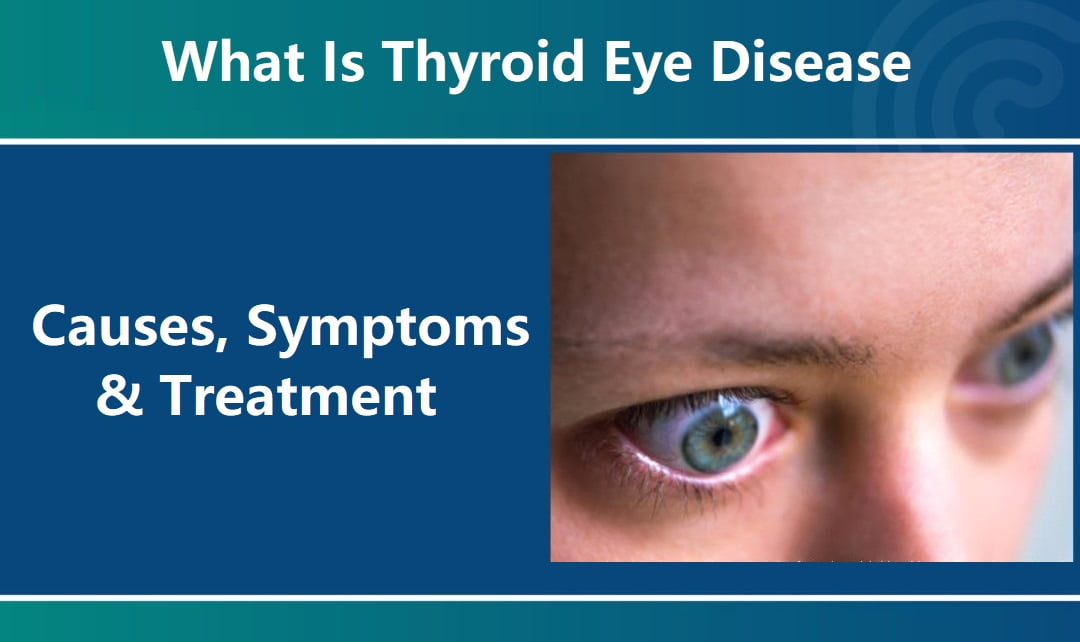Celiac Disease in Children : Types, Symptoms & Treatment 2025

Celiac disease is an autoimmune disorder that affects children and adults. It is caused by an abnormal immune reaction to gluten, a protein found in wheat, barley, and rye. When someone with this disease eats gluten, it triggers damage to the small intestine, leading to an array of symptoms and complications.
Celiac disease is often challenging to detect, especially in children, because its signs and symptoms vary widely and can be confused with other conditions. Getting an accurate diagnosis and starting treatment, which means excluding all gluten from the diet, is crucial to prevent long-term complications.
What is Celiac Disease?
Celiac disease is a chronic autoimmune disorder characterized by an abnormal immune reaction to gluten. When people with celiac eat foods containing gluten, their immune system responds by attacking the small intestine, causing inflammation and damage to the villi – small, finger-like projections that line the small intestine.
Villi normally allow nutrients from food to be absorbed into the bloodstream. When they are damaged, the intestine can’t properly absorb nutrients. This can lead to malnutrition, anemia, osteoporosis, growth delays in children, and other problems, even with a gluten-free diet.
Celiac disease is also known as:
- Celiac sprue
- Gluten-intolerant enteropathy
- Non-tropical sprue
- Gluten-sensitive enteropathy
It’s estimated to affect 1 in 100 people worldwide, but many cases go undiagnosed. Celiac disease can develop at any age after gluten is introduced into the diet. More is being discovered about the disease all the time.
Types of Celiac Disease
There are several types of celiac disease classified according to the severity of symptoms and intestinal damage:
Classic Celiac Disease
This is the most easily recognized form of celiac disease and usually appears in early childhood after gluten is introduced to the diet, between the ages of 1 and 3 years old. Symptoms can include:
- Diarrhea
- Abdominal bloating and pain
- Vomiting
- Constipation
- Pale, foul-smelling stool
- Weight loss
- Failure to thrive in infants
Blood tests reveal high levels of antibodies, and a biopsy of the small intestine shows flattened villi caused by the immune reaction to gluten.
Atypical Celiac Disease
This is the most common type of celiac disease today. Symptoms are less gastrointestinal and may include:
- Anemia
- Fatigue
- Behavioral issues
- Dental enamel defects
- Osteoporosis
- Arthritis
- Depression or anxiety
- Migraine headaches
Since the symptoms are so variable, it can be challenging to diagnose without an intestinal biopsy. People may suffer for years before getting an accurate celiac disease diagnosis.
Silent Celiac Disease
Some people have positive blood tests and intestinal damage typical of celiac disease but have no obvious symptoms. This is known as “silent” celiac disease. It is often detected through screenings or when doctors test for other problems. Strict adherence to a gluten-free diet is still required to avoid complications.
Potential Celiac Disease
In potential celiac disease, people have positive blood tests but normal biopsies. Most develop intestinal damage and classic symptoms over time. Doctors recommend maintaining a gluten-free diet to prevent complications.
Refractory Celiac Disease
This rare type involves persistent or recurring symptoms and intestinal damage even after adopting a gluten-free diet for more than 6-12 months. Additional treatments may be needed beyond a gluten-free diet.
Dermatitis Herpetiformis
This skin condition related to celiac disease causes blistering rashes on the elbows, knees, back, or buttocks. The rash and intestinal damage improve on a gluten-free diet but can flare after gluten exposure.
What Causes Celiac Disease?
Researchers don’t yet have an exact cause, but it’s believed celiac disease is mainly genetic and environmental. These factors lead to the abnormal immune reaction to gluten:
Genetic Predisposition
This disease tends to run in families. Someone with a first-degree relative with celiac has a 1 in 10 risk of developing it. Certain HLA genes called HLA-DQ2 and HLA-DQ8 predispose people to react to gluten. About 30% of the population carries these genes, but only 3% develop celiac disease.
Gluten Exposure
Eating gluten triggers an autoimmune reaction in genetically susceptible individuals, causing damage to the small intestine. Some additional theories suggest a virus or surgery may also play a role in developing celiac later in life.
Age/Stage of Life
Celiac can begin at any age after introducing gluten, but there are vulnerable periods:
- Infancy: 6 to 24 months old after starting solid foods with gluten.
- Early childhood: Age 2 to 6, after more gluten enters the diet.
- Adulthood: Celiac symptoms can emerge after pregnancy, major surgery, infection, or other illness.
Celiac Disease Symptoms in Children

Celiac disease symptoms can vary greatly from child to child based on the type, extent of intestinal damage, and nutritional status. Symptoms often develop gradually and are commonly attributed to other causes. Some children show mild intestinal symptoms, while others struggle with serious malnutrition.
Common symptoms of celiac disease in children include:
Digestive Problems
- Chronic diarrhea
- Abdominal pain, gas, bloating
- Pale, foul-smelling stools
- Weight loss
Malnutrition
- Failure to thrive/faltering growth in infants
- Delayed growth/short stature
- Weight loss
- Deficiencies in iron, folate, vitamin D, and vitamin K
Irritability & Behavior Issues
- Chronic irritability, colic, crying
- ADHD
- Poor temperament
- Difficulty learning
Other Signals
- Dental enamel defects
- Fatigue
- Headaches
- Arthritis
- Anemia
- Weak, aching bones
- Seizures
- Skin rash with itchy blisters (dermatitis herpetiformis)
Symptoms are very diverse even within the same family. Some children experience no GI symptoms but struggle with neurological issues, anemia, or osteoporosis until celiac disease is detected through screening.
Diagnosing Celiac Disease in Children
Since celiac symptoms vary widely, it can be challenging to diagnose, especially in young kids. There are several important steps doctors use to detect celiac disease:
Medical History
Doctors assess symptoms, family history of celiac disease, autoimmune disorders, and gluten-related issues. Nutritional deficits, growth problems, or delays may indicate celiac disease.
Blood Tests
Serologic testing looks for higher levels of antibodies in the blood, indicating an immune reaction to gluten:
- TTG-IgA test: Measures tissue transglutaminase antibodies
- DGP antibodies: Detects antibodies to deamidated gliadin peptides
- EMA test: Checks for anti-endomysial antibodies
High antibody levels signal likely celiac disease but are not definitive. Some children test negative yet still have celiac. Doctors also test total IgA levels.
HLA Genetic Testing
Genetic tests check for HLA-DQ2 and HLA-DQ8 markers associated with celiac disease risk. However, a large portion of the population has these genes, so carrying them does not mean someone will develop celiac.
Endoscopy & Intestinal Biopsy
This is the gold standard for diagnosing celiac disease. A tiny tissue sample is taken from the small intestine to check for villous atrophy. Doctors recommend a biopsy while on a regular, gluten-containing diet for accurate results.
Based on symptoms, bloodwork, and biopsy results, doctors can diagnose and classify the type of celiac disease. Testing every 2-3 years monitors if the small intestine is healing on the gluten-free diet.
Treating Celiac Disease in Children
The only current treatment for celiac disease is strictly and permanently eliminating gluten from the diet. Without treatment, the disease causes ongoing immune system activation and small intestinal damage.
Starting a Gluten-Free Diet
Once diagnosed, doctors advise removing all gluten-containing grains from a child’s diet: wheat, barley, rye, and possibly oats. This requires vigilance in reading labels, awareness of cross-contamination, and communicating with schools.
Within weeks, a strict gluten-free diet allows the small intestine to start healing and symptoms to improve. But it can take 6 months to 2 years for the intestines to fully recover.
Following Up With Doctors
Ongoing follow-ups help ensure children adhere to the diet, restore nutrients, check antibodies, monitor growth, and watch for complications. Kids need regular screening for anemia, osteoporosis, and other issues.
Supplementing Key Nutrients
Nutritional deficiencies are common at diagnosis. Children often need supplements to correct iron, folic acid, vitamin D, calcium, or zinc deficiencies. Doctors tailor supplements based on lab tests.
Identifying Other Food Sensitivities
Some children improve on a gluten-free diet and then worsen, indicating other food intolerances like dairy, soy, or corn. Eliminating potential trigger foods under a doctor’s guidance can relieve ongoing issues.
Exploring New Treatment Options
Researchers continue working on new drug treatments to target the abnormal immune response to gluten. But the gluten-free diet remains the only proven, effective treatment for kids with celiac disease today.
Celiac Disease Diet for Kids
The gluten-free diet is a major adjustment for kids, especially with social, school, and activities. Parents play a vital role in providing gluten-free options. The following tips can make the diet more manageable:
Learn Gluten-Free Foods
Focus first on adding naturally gluten-free grains and foods: quinoa, buckwheat, rice, amaranth, fruits, vegetables, beans, nuts, seeds, eggs, and meat. Explore gluten-free baking to introduce variety.
Read All Labels
Scan ingredients for wheat, rye, barley, malt, or vague terms like “natural flavors.” Many processed foods contain hidden gluten. Look for “gluten-free” labels, but still check the ingredients.
Avoid Cross-Contamination
Be vigilant about trace gluten exposure from shared surfaces, utensils, or cooking tools. Prepare gluten-free items first, use separate toasters, and wash hands thoroughly after touching gluten.
Communicate With Schools
Inform teachers, the cafeteria, nurses, and coaches about your child’s needs. Provide safe gluten-free snacks, treats, and emergency meals for field trips. Review lesson plans involving wheat/gluten.
Cook More Meals at Home
Prepare more fresh recipes at home to avoid gluten, rather than relying on processed foods. Engage kids in gluten-free cooking and learning new recipes. Make safe meals fun and educational.
Find Support Online
Connect with other gluten-free families through blogs, apps, and social media groups. Follow kid-friendly sites offering recipes, tips, and ways to thrive on the GF diet. Consider joining a local celiac disease support group.
Living with Celiac Disease Long-Term
Adjusting to celiac disease and sticking to the diet long-term poses challenges for kids and families. But with the right treatment and lifestyle, most kids go on to live healthy, full lives:
Lifelong Gluten-Free Diet
Celiac is a chronic condition, so maintaining a strict gluten-free diet is mandatory for life. Cheating leads to symptoms, damage, complications, and worsening antibody levels. Teens need continued guidance to manage their diet.
Watch for Hidden Gluten
Always scrutinize labels since ingredients change and “gluten-free” rules differ by country. Trace gluten from cross-contact is also hard to avoid. Supporting kids having “cheat days” may undermine health.
Prioritize Nutrient-Dense Foods
Focus on naturally gluten-free, whole foods to ensure kids get proper nutrients for growth and development. Include plenty of fruits, veggies, lean protein, nuts, eggs, and dairy if tolerated.
Monitor Health Regularly
Follow up with the pediatric gastroenterologist and primary care doctor to check on diet adherence, symptoms, growth, bloodwork, and potential complications. Annual screening is important.
Find Emotional Support
Kids can feel left out with a restricted diet. Connect them with other gluten-free kids through camps, school groups, and online networks. Work with a therapist if kids struggle with celiac-related anxiety or depression.
Advocate At School
Be proactive to keep your child safe at school. Educate staff, provide gluten-free snacks/lunches, and review class projects. Field trip meals need special planning. Update administrators annually.
Teach Kids Self-Care Skills
As kids get older, teach them to ask questions, read labels, avoid cross-contact, and speak up about dietary needs. Set them up to eventually manage gluten-free living on their own.
The Takeaway on Celiac Disease in Children
Celiac disease is a serious autoimmune disorder with a variety of symptoms and health consequences. Diagnosing it early and removing all gluten from a child’s diet are keys to regaining health and preventing permanent complications.
Kids face unique challenges sticking to the gluten-free diet long-term. With support from their parents and doctors, they can learn to thrive with celiac disease and live full, active lives. Annual follow-up care is essential to ensure children meet developmental milestones and avoid associated health issues.
Ongoing research brings hope for additional treatment options and better diagnosis and screening for celiac disease. But for now, strictly avoiding all gluten exposure remains the best way for kids with celiac disease to manage the condition and reduce the risk of serious, sometimes life-threatening symptoms and complications.
Frequently Asked Questions About Celiac Disease in Children
What are the first signs of celiac disease in a child?
Some common first signs of celiac disease in infants and younger children include chronic diarrhea, failure to thrive, pale, foul-smelling stools, gas and abdominal distension, irritability, and fussiness. In older kids, symptoms may be fatigue, headaches, anemia, weight loss, growth delay, or dental enamel defects.
How do doctors test for celiac disease?
Diagnosing celiac disease involves blood tests to look for high antibody levels signaling an immune reaction to gluten. The definitive test is an endoscopy with a biopsy of the small intestine to check for damage to the villi. Doctors may also test for certain genes associated with celiac risk.
Do celiac symptoms go away on a gluten-free diet?
Yes, celiac symptoms typically improve significantly within weeks and resolve fully over 1-2 years on a strictly gluten-free diet as the gut heals. But without treatment, the disease causes worsening damage, malnutrition, and severe complications. Lifelong diet adherence is needed.
What happens if celiac disease goes untreated?
Untreated celiac disease can lead to chronic diarrhea, weight loss, malnutrition, anemia, osteoporosis, growth failure, infertility, neurological issues, intestinal cancers, and, in rare cases, intestinal perforation and death. Early treatment is critical.
Can you outgrow celiac disease?
No, celiac disease is an autoimmune disorder that is not outgrown or cured. Lifelong adherence to a gluten-free diet is necessary to control symptoms and prevent complications. The small intestine will start to atrophy again if gluten is reintroduced.
What foods can kids with celiac disease eat?
Kids with celiac disease must avoid any foods containing wheat, barley, rye, or possibly oats. They can eat a variety of naturally gluten-free foods like fruits, vegetables, beans, nuts, seeds, eggs, meat, poultry, fish, dairy products, rice, quinoa, cornmeal, buckwheat, and gluten-free flour.
Can celiac disease develop later in life?
Yes, while celiac often appears in early childhood, it can emerge at any age after gluten is introduced into the diet, even in adulthood. Various factors like surgery, infection, pregnancy, stress, or medications can trigger celiac disease to develop later on.
Is a gluten-free diet healthy for kids?
Yes, planning a gluten-free diet can be very healthy for kids by focusing on whole, nutrient-dense foods. Include plenty of fruits, vegetables, lean proteins, nuts, and naturally gluten-free grains. Monitor diet quality and supplementation with a pediatrician.
Do celiac disease antibodies go away?
Celiac antibodies on the blood test decline and often normalize within 6-12 months on a strict gluten-free diet as the small intestine heals. But they will go up again if gluten is reintroduced. Repeat testing helps monitor adherence and recovery.
What happens if my child accidentally eats gluten?
Occasional accidental gluten exposure will likely cause symptoms like pain, diarrhea, or fatigue, but is not dangerous if the diet is strictly gluten-free otherwise. Frequent or high gluten exposure will perpetuate immune damage. Speak to a doctor about any ingestion.
Conclusion
Celiac disease requires significant lifestyle adjustments for kids and families. But with an accurate diagnosis and diligent avoidance of gluten, children can grow and thrive despite celiac disease. Connecting with other families living gluten-free helps kids feel supported.
Ongoing follow-up with healthcare providers and careful label reading brings peace of mind that IDs are getting the nutrition they need. While celiac presently has no cure, research continues to provide hope for emerging treatment options and better management.
Empowering children with knowledge and self-care skills equips them to successfully manage celiac disease as they get older. With patience and perseverance, kids with this disease can pursue their passions and live full lives.



